Ceaușescu legacies live on long after his execution
The Romanian dictator kicked 40,000 people out of their homes, businesses and historic neighbourhoods to build a monument to his ego
The heart of Bucharest, Romania, has a 5-kilometre long scar down the middle, the result of a 1-kilometre wide excision made under orders from Communist dictator Nicolae Ceaușescu to create a grandiose central mall, Champs-Elysées-style, as a monument to his power and ego.
The “Centrul Civic” project evicted 40,000 people from this historic section of the 500-year old city with a single day’s notice. Following in the wake of a 1977 earthquake, in the 1980s, Ceaușescu launched an “urban renewal” project where bulldozers amplified the damage, razing entire neighbourhoods and destroying hundreds of historic buildings, including churches, hospitals, schools and most of the Jewish quarter.
The “socialist realism” architectural style of the massive marble-clad commercial, residential and office towers that replaced the destroyed neighbourhoods is overwhelming, even 40 years later (see video, above). And although Ceaușescu was overthrown and executed in 1989 before the Civic Centre and his opulent marble palace at the top of the hill were completed, the massive project ensured his legacy would live on for generations.



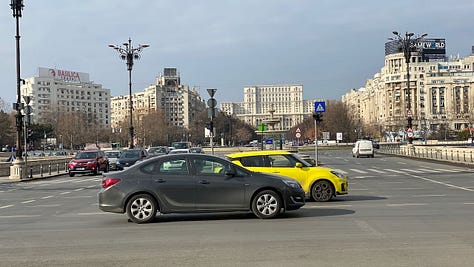

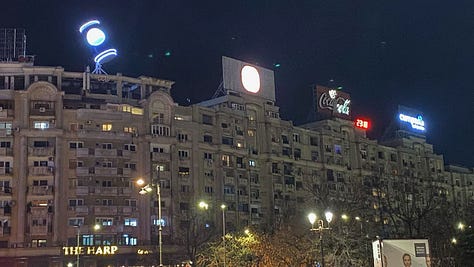
But Bucharest is a city of contradictions. Many of the historic buildings that survived “Ceausima” — a word combining Ceaușescu and Hiroshima —are now protected and a variety of modern architectural style have proliferated around the city. More than 2,000 structures are now classified as historical monuments, tho many are in bad shape and owners lack the funds or expertise to restore them.



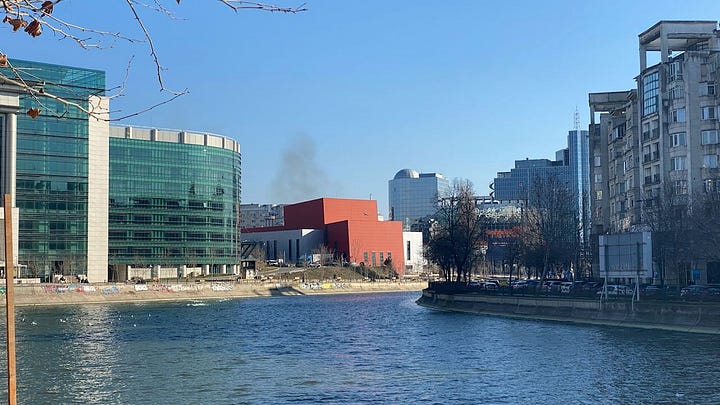
Probably the most iconic example of this combination of old and new is now the headquarters of the Union of Romanian Architects. The Paucescu House project preserved the facade of former headquarters of Ceaușescu’s secret police and built a modern glass office tower within it. While lauded by some as a connection between past and present, I found its incongruity quite jarring, like attaching a wooden figurehead on a space ship. And while I think preserving heritage sites is important, I don’t think the facade of secret police headquarters merits preservation, especially when so much of the Communist era remains on prominent, brutalist display.
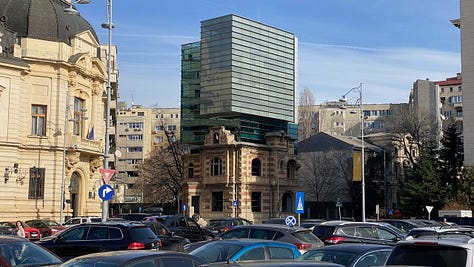




Which brings us to the elephant in the square. The Palace of Parliament, Bucharest’s best-known tourist site, is home to its legislature and 1,100 offices. Many tourist sites describe it as the second-largest administrative or office building (after the Pentagon) in the world, but like many sites claiming to be the biggest something-or-other, the devil is in the definition. Choose the right category (administrative, office, legislative) or size (acreage, floor space or even volume) and the Palace will move up and down the “largest” list like a yo-yo. A very heavy yo-yo.
With more than 4 million tonnes of concrete, steel, marble and glass, Guinness World Records confirms it’s the heaviest building on Earth. Because the Pyramid of Giza is not a building. Also, it’s the world’s largest socialist state palace! See, it’s all selecting the right category!
Anyway, after Ceaușescu and his wife Elena were “tried” and executed on Christmas Day, 1989, the revolutionary Romanian government was left to decide what to do with the Palace, whose construction had started more than five years earlier. Rather than destroy it and what it represented, it was decided to complete it over the next eight years at a total cost of about $4 billion, making it the most expensive “administrative building” in the world. When nearly completed in 1994, the House of Representatives opened up shop; the Senate was also moved in a few years later.
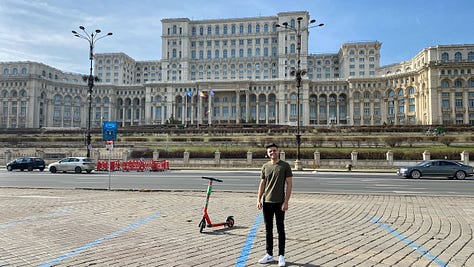
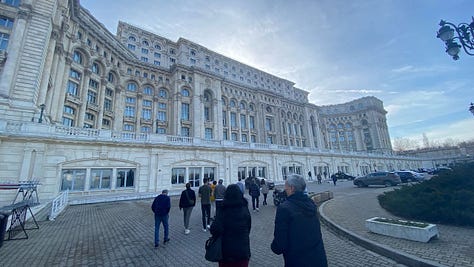


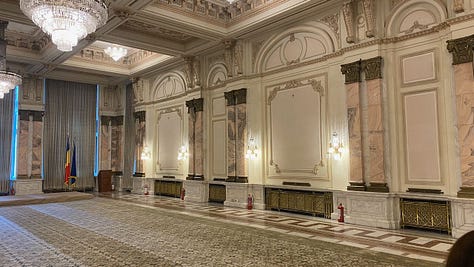

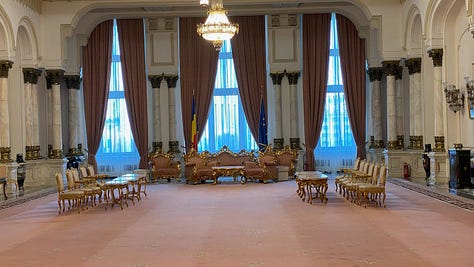

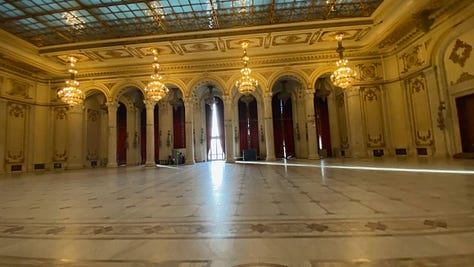
I went on the tour, of course. You only see a small part of the palace (6 percent, we were told), and since I’d chosen a tour at 3:30 on a Friday afternoon, the building seemed pretty empty. It’s a work of art and you can’t help but be impressed by all the marble floors and walls, the oak, mahogany and ebony panels and doors, not to mention the vaulted ceiling ranging from 8 to 16 metres high. I was disappointed that we didn’t get to see the legislative wing, tho I suspect there are very few parliaments around the world that let “the people” in to see where the decisions are made in this era of hyper-security.
I asked the tour guide about how much use the building is getting. On Wikipedia, you’ll read “the project was extended to 1990, but remains uncompleted to this day. Only two large meeting rooms and 400 others have been finished or are even being used, out of a total of 1,100.” The guide assures us that wasn’t true, however, he said it was fully occupied. Asked by my Romanian hostel-buddy Tudor about reports that the building was sinking, as Wiki also reports, the guide denied that as well. Wiki claims “the Palace of the Parliament sinks 6 mm (0.24 in) each year due to its weight. Romanian specialists who have analyzed the data have explained that the palace's massive weight is causing the layers of sediment below the building to settle.”
The guide was evasive about the number of floors of the building. Ceaușescu was reported to have ordered extensive and secret underground bunkers and tunnels. “It wouldn’t be very secret if everyone knew,” he joked. Tell that to Wiki, which claims “eight underground levels, the deepest housing a nuclear bunker, linked to main state institutions by 20 km of tunnels.”
What’s the truth? As I’ve learned in so many of my travels, if a story seems too good to be true, take it with a grain of salt. Or perhaps, in Romania’s case, a clove or two of garlic.
That’s enough city, mystery and history for this week. Next post, we get out of Bucharest and explore the beautiful Carpathian mountains, home to castles and kings in the Romanian region of Transylvania.
As always, I appreciate you taking the ride with me.





Awesome journey! You should write a book when you get home! I’ll buy it!!